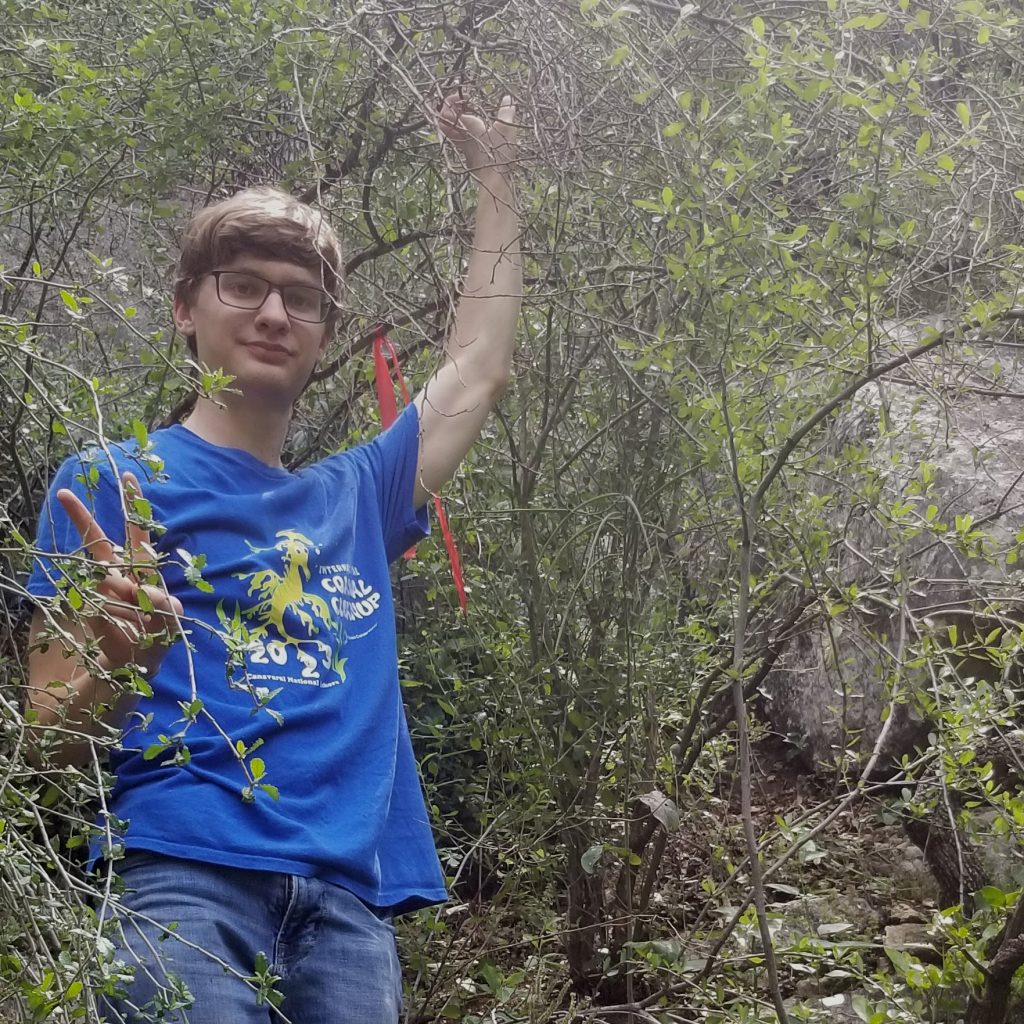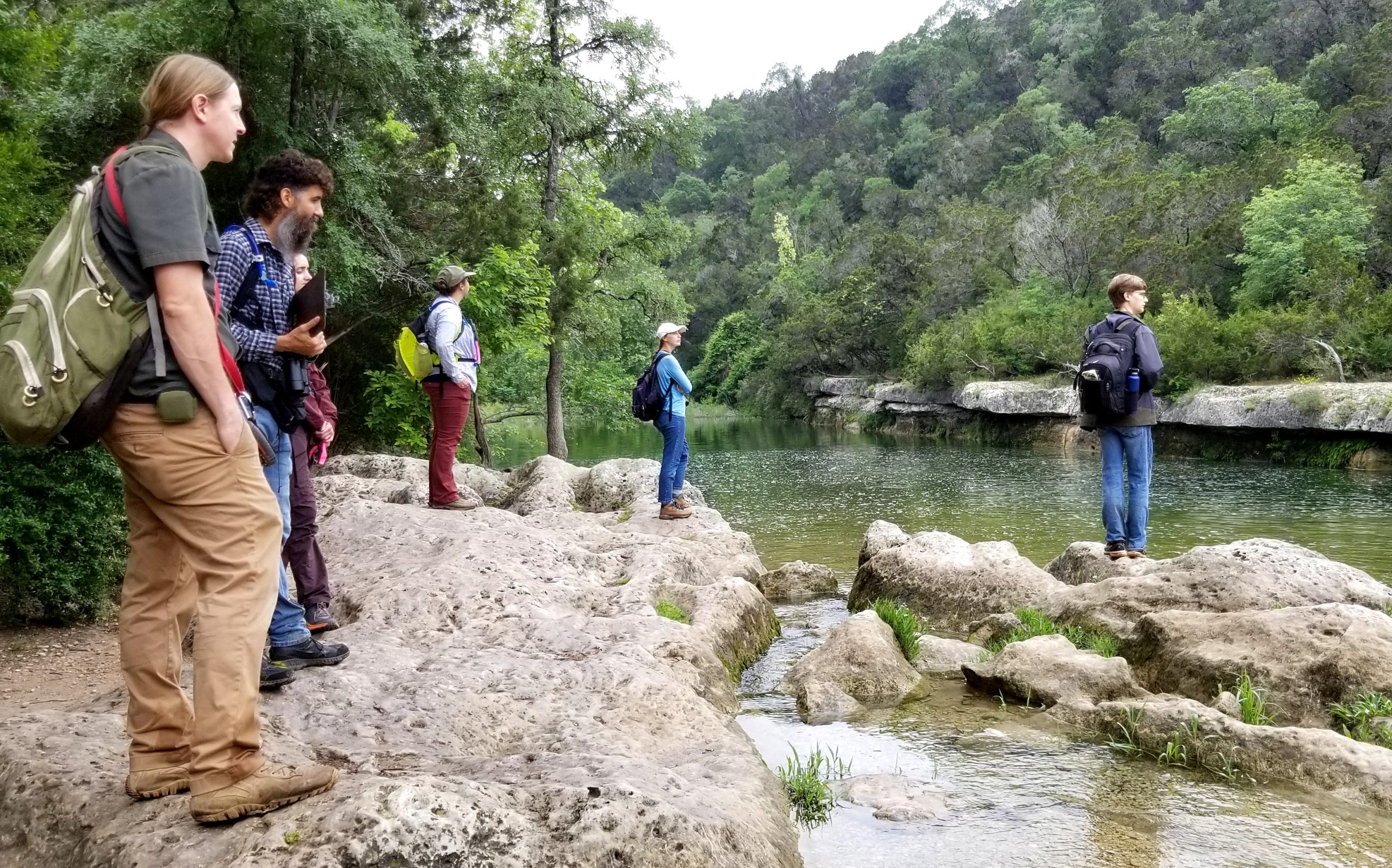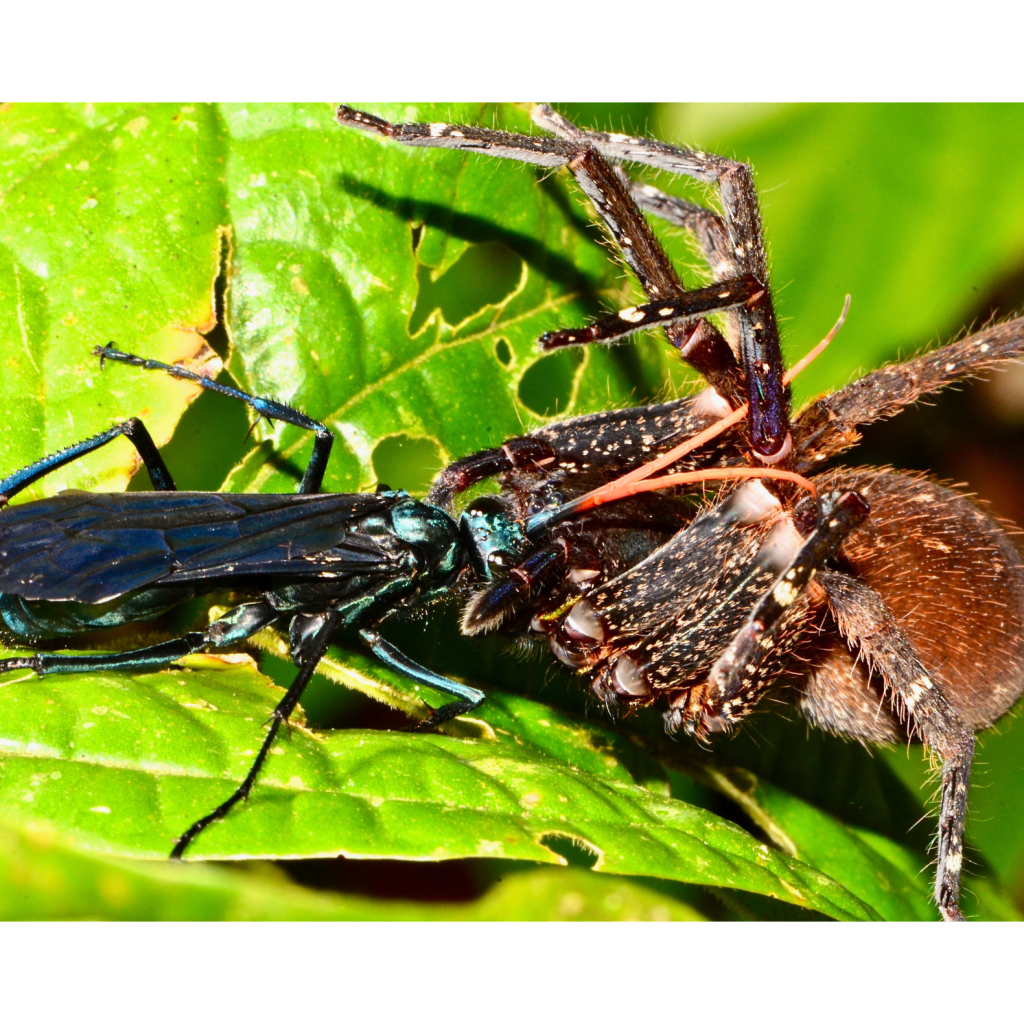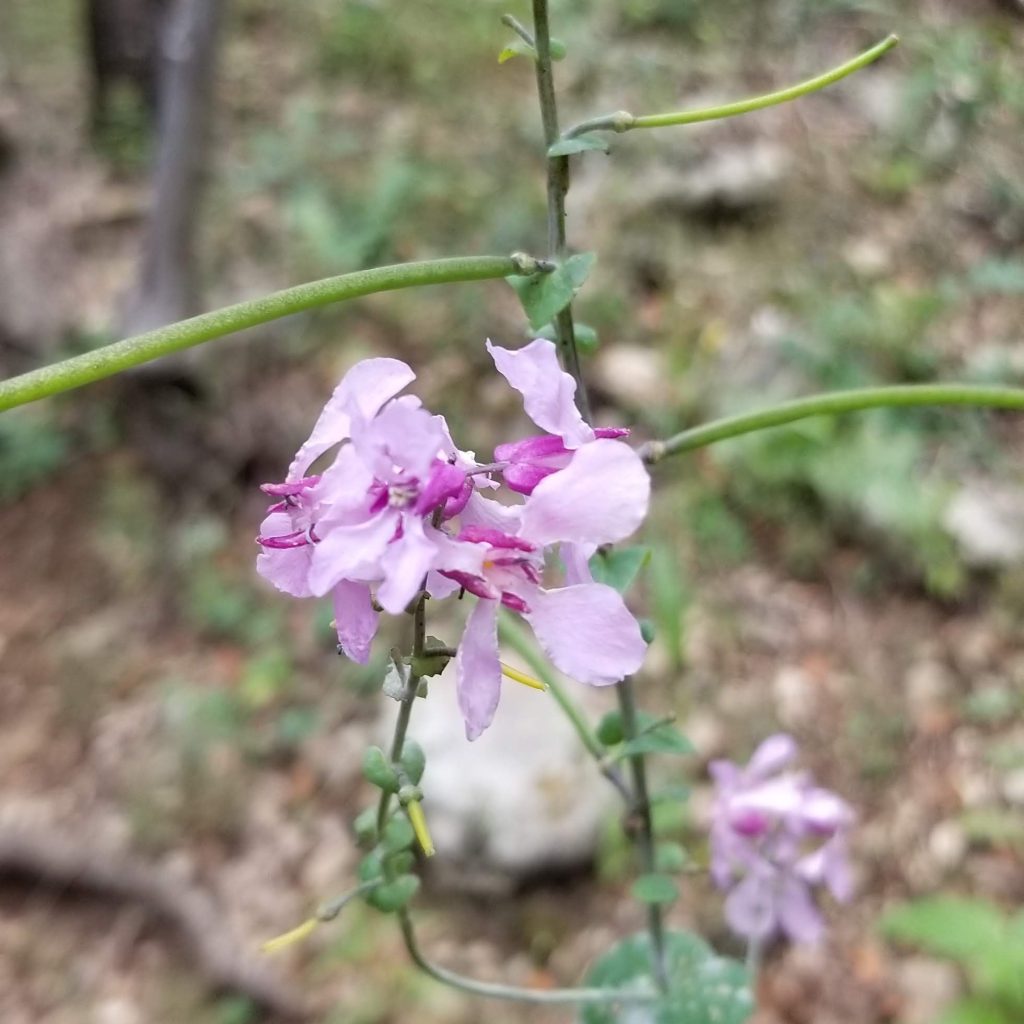by Noah Guthrie
I clutched at a root overhead, then heaved myself upslope, passing through the wooden web at the base of a tree. With stems wavering at my feet and an earthy aroma hovering over cracked white stones, I crept along the hill and scanned the plants for any sign of a purple bloom.
Though I’d climbed this part of the hill alone, the other A Rocha USA interns (Maddie and Michaela) and our supervisor Verónica were surveying the forest below. Having searched with no success for almost three days, I wasn’t confident that our prize would appear, and I started to wonder if climbing this high had been a pointless gesture.
As I crawled along, I touched a tall green stem. Sliding my fingers up its length, I discovered – not a blossom – but a crown of green pods, long and curved like string beans. Excitement pulsed in my chest.
“I’ve found one!” I called to Verónica, and she started to scale the slope, GPS in hand.
Me with the twistflower, its curving, grass-blade siliques faintly visible to the bottom right of my elbow.
This was it: the Bracted Twistflower, Streptanthus bracteatus. This endemic species of Central Texas was finally listed as threatened in 2023, having lost much of its population to development, grazing deer, and encroachment from junipers. You can recognize them by their four-petaled, lilac flowers – which are ruffled and lobed like X chromosomes – or by their long, bean-like seed pods, called siliques. Evidently, the flowers on the one I’d just found had already died, leaving just the pods.
Our team was trying to support the twistflower’s recovery by gathering data on them at Barton Creek Wilderness Park. Though we had little luck finding them that week, an earlier pair of surveys had been much more rewarding, with more volunteers and literally hundreds of twistflower sightings.
Searching for S. bracteatus at Barton Creek.
Whenever we found a cluster of these little plants, we used a clipboard and GPS to record their location, number of siliques, and degree of damage. Sadly, many of their leaves were clotted with mold, or torn to jigsaws by insects. The mold in particular seemed to love S. bracteatus.
We tallied over a thousand twistflowers during one of our surveys, and most of them, from what I recall, were marred by mold or insects. Ragged as the poor creatures were, one may have been tempted to stomp them and put them out of their misery, if they hadn’t been threatened.
How do we make sense of a God who allowed this kind of ecosystem to form, where parasites like bugs, mold, and humans (when we’re at our worst) destroy the lives of so many other creatures? Even if we blame the present ecological order on human beings, whose corruption caused the Earth to become “cursed” (Genesis 3:17-18), it begs the question of how an omniscient deity who created every part of us – internal and external – wouldn’t be indirectly responsible for our corrupt actions.
A spider wasp (Family Pompilidae) laying its eggs in an unfortunate arachnid. Image by Marco Mello, 2 Oct. 2018 (CC BY-NC-SA 2.0).
If we say, on the other hand, that an all-good and all-powerful God intended nature to be this way, then we might have to conclude that the best of all possible worlds is one where “[f]orty to 50 percent of all animal species… are parasites,” actively destroying the other fifty to sixty percent. (See Rachel Nuwer’s article in the New York Times.) Each response to ecological suffering is puzzling in its own way.
Still, what’s striking about the Bracted Twistflower is its continued resilience. Yes, it’s crooked, gnawed, and moldered, but it’s also rooted and blooming, petals ascending in a lavender helix. As its siliques mature, it withers, but the mauve spark of its life remains in the seeds, which can survive in a dormant state underground for several years.
A Bracted Twistflower (Streptanthus bracteatus) and its green siliques.
The sprouting of these seeds echoes another resurrection, and their tattered flowers recall another body raised on a stem to be pierced, tortured, and buried. “Truly, truly, I say to you,” Jesus said, “unless a grain of wheat falls into the earth and dies, it remains alone; but if it dies, it bears much fruit” (John 12:24). In this parasitized flowerbed where everything withers, the gardener enters its pain and strives against it.
Here’s where mercy seems to shine through: the twistflowers keep rooting, and the seeds live on. They just need good soil and rain. If we humans make room, the twistflower will continue to rise, munched and stained and glorious, until the dawn of the New Heaven and New Earth. In that restored world, maybe there will still be parasitism (the Bible doesn’t specify), or maybe things will be different. If God can wipe the tears from every eye (Revelation 21:4), then perhaps God can also wipe the mold from every leaf, and the rot from every root.

Noah Guthrie serves as our Nashville Conservation Coordinator, supporting our communications team and Churches of Restoration program from his home city. In his free time, he enjoys doing yoga, reading fantasy novels, and watching wholesome British TV with his family.













Thank you for such an imaginative understanding and thought for the twist flower that is carefully watched and the gardener who enters its pain, as its seeds live on.